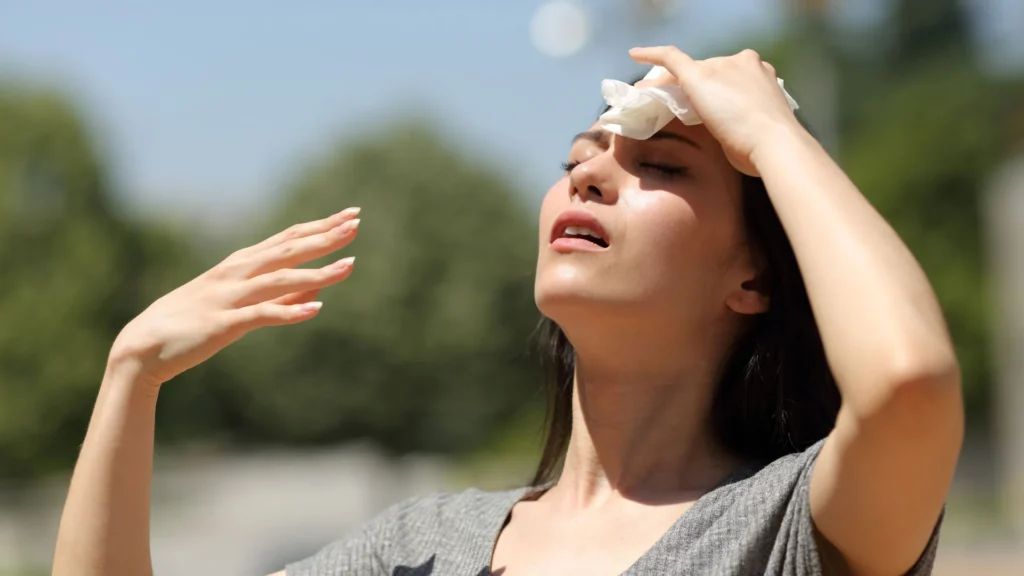As the temperatures rise, so does the risk of heat-related illnesses like heat stroke. Whether you’re soaking up the sun at the beach or working outdoors, it’s essential to stay informed about this potentially life-threatening condition. Let’s break it down into simple terms: what causes heat stroke, how to recognize its symptoms, and what to do if it happens.
What Causes Heat Stroke?
Heat stroke occurs when the body overheats due to prolonged exposure to high temperatures and humidity. When your body can’t cool itself down through sweating, your core temperature can soar to dangerous levels, leading to heat stroke. Factors that increase the risk of heat stroke include dehydration, strenuous physical activity in hot weather, and certain medications that affect how your body regulates heat. In the realm of cardiovascular wellness, understanding what causes heat stroke is essential for maintaining overall health and preventing heat-related complications.

Recognizing the Symptoms
Recognizing the symptoms of heat stroke is crucial for taking timely action and preventing serious complications. Keep an eye out for signs such as a high body temperature, altered mental state, flushed skin, rapid heartbeat, headache, dizziness, nausea, and vomiting. If you or someone you know experiences any of these symptoms, especially in hot and humid conditions, it’s essential to seek shade, hydrate, and cool down the body immediately. Don’t hesitate to seek medical help if symptoms are severe or don’t improve with basic cooling measures. Early recognition can make all the difference in effectively treating heat stroke and avoiding its potentially life-threatening consequences.
- High Body Temperature: A body temperature of 104°F (40°C) or higher is a red flag.
- Altered Mental State: Confusion, agitation, disorientation, or even loss of consciousness can occur.
- Flushed Skin: Your skin may feel hot and dry to the touch, with little to no sweating.
- Rapid Heartbeat: Your pulse may become fast and strong as your body struggles to cool down.
- Headache and Dizziness: Persistent headaches and feelings of lightheadedness are common.
- Nausea and Vomiting: Upset stomach and vomiting can accompany heat stroke.
Treatment for Heat Stroke
Treating heat stroke requires swift action to lower the body’s temperature and prevent further complications. If you suspect someone is experiencing heat stroke, immediately move them to a cooler environment, such as indoors or in the shade. Begin cooling their body by applying cool water to their skin or placing ice packs on their armpits, groin, neck, and back. Encourage them to drink cool water or sports drinks to rehydrate, but avoid alcohol or caffeine. Monitor their vital signs closely and seek medical help if symptoms are severe or don’t improve after attempting cooling measures for 15 minutes. Acting quickly can make all the difference in preventing heat stroke from escalating into a life-threatening situation.
- Move to a Cool Place: Get the person out of the sun and into a shaded or air-conditioned area.
- Cool the Body: Lower their body temperature by applying cool water to their skin or placing ice packs on their armpits, groin, neck, and back.
- Hydrate: Encourage the person to drink cool water or sports drinks to rehydrate, but avoid alcohol or caffeine.
- Monitor Vital Signs: Keep an eye on their temperature and watch for any changes in their condition.
- Seek Medical Help: If symptoms are severe or don’t improve after 15 minutes of cooling efforts, call emergency services immediately.

Preventing Heat Stroke
Preventing heat stroke is all about staying cool and hydrated, especially during hot and humid weather. Take frequent breaks in the shade, wear lightweight and light-colored clothing, and avoid strenuous activities during the hottest parts of the day. Stay hydrated by drinking plenty of fluids, even if you don’t feel thirsty, and avoid alcohol or caffeine, which can contribute to dehydration. Listen to your body and know your limits; if you start feeling overheated, take immediate steps to cool down. By being mindful of these preventative measures, you can enjoy the summer months safely and reduce your risk of heat stroke.
- Stay Hydrated: Drink plenty of fluids, even if you don’t feel thirsty, especially when it’s hot and humid.
- Stay Cool: Seek shade, wear lightweight, light-colored clothing, and avoid strenuous activities during the hottest parts of the day.
- Take Breaks: If you’re working or exercising outdoors, take frequent breaks in the shade to cool down.
- Know Your Limits: Listen to your body and pace yourself. If you start feeling overheated, take action to cool down immediately.
- Be Mindful of Medications: Some medications can increase your risk of heat stroke, so talk to your doctor about any concerns.
Conclusion
Heat stroke is a serious condition that requires prompt attention, but with awareness and prevention, it’s entirely avoidable. By staying hydrated, staying cool, and knowing the signs of heat stroke, you can enjoy the summer months safely. So, as the temperatures climb, remember to beat the heat and take care of yourself and those around you.







